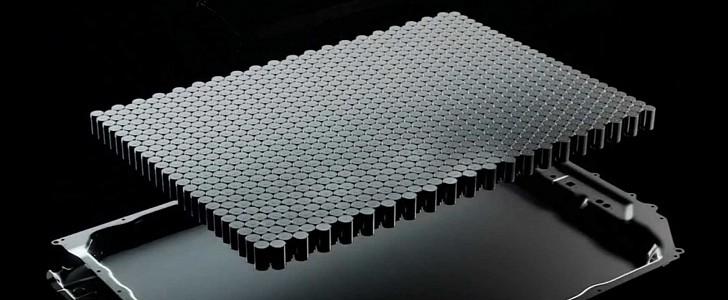Current Li-Ion batteries, with the notable exception of those with LFP chemistry, use raw materials that are either expensive or very hard to find. This questions the very mission of electric vehicles as outlined by Elon Musk in his famous Master Plans. To allow for a very large scale, Tesla is working on battery chemistries that use readily available materials, says Elon Musk.
Elon Musk met with Tesla fans in Germany at Gruenheide gigafactory opening and revealed that Tesla is working on new battery chemistries. This comes at a moment when Li-Ion batteries use either cobalt or nickel, both being hard to extract materials that lately have seen insane price increases. During the Q&A session that followed the Giga Berlin opening, Musk hinted at cutting down on nickel by using manganese in future batteries.
Traditionally, Tesla uses an NCA (nickel-cobalt-aluminum) chemistry for its vehicles but also an NCM (nickel-cobalt-manganese) chemistry for Powerwall storage batteries. Nickel-based batteries will see increased attention in the foreseeable future, thanks to their qualities such as high energy density. That’s why longer-range versions of Tesla vehicles will use nickel. Nevertheless, Musk also stated that LFP batteries will be the go-to option for standard-range vehicles.
Asked about graphene batteries, Musk brushed aside their usefulness, as graphene production is tricky and doesn’t allow for scaling, at least at the moment. On the other hand, he considers manganese as a viable option, and Musk already told us this much two years ago, at Tesla Battery Day in 2020.
“It is relatively straightforward to do a cathode that’s two-thirds nickel and one-third manganese, which will allow us to make 50% more cell volume with the same amount of nickel,” said Musk in 2020.
Nevertheless, Tesla did not use manganese in its batteries except for the Powerwall. Manganese has the potential to allow for a higher energy density than LFP chemistries and a lower price than nickel-rich batteries.
“At very large scale, we need tens, maybe hundreds of millions of tons ultimately. So the materials used to produce these batteries at a very large scale need to be common materials or you can’t scale,” said Musk at Giga Berlin opening.
Elon Musk aims for extreme-size scaling for Tesla’s EV business, so the battery production will have to keep up with his ambitions. According to Musk, the world needs around 300 terawatt-hours of battery cell production to replace all ICE vehicles with electric equivalents.
Traditionally, Tesla uses an NCA (nickel-cobalt-aluminum) chemistry for its vehicles but also an NCM (nickel-cobalt-manganese) chemistry for Powerwall storage batteries. Nickel-based batteries will see increased attention in the foreseeable future, thanks to their qualities such as high energy density. That’s why longer-range versions of Tesla vehicles will use nickel. Nevertheless, Musk also stated that LFP batteries will be the go-to option for standard-range vehicles.
Asked about graphene batteries, Musk brushed aside their usefulness, as graphene production is tricky and doesn’t allow for scaling, at least at the moment. On the other hand, he considers manganese as a viable option, and Musk already told us this much two years ago, at Tesla Battery Day in 2020.
“It is relatively straightforward to do a cathode that’s two-thirds nickel and one-third manganese, which will allow us to make 50% more cell volume with the same amount of nickel,” said Musk in 2020.
Nevertheless, Tesla did not use manganese in its batteries except for the Powerwall. Manganese has the potential to allow for a higher energy density than LFP chemistries and a lower price than nickel-rich batteries.
“At very large scale, we need tens, maybe hundreds of millions of tons ultimately. So the materials used to produce these batteries at a very large scale need to be common materials or you can’t scale,” said Musk at Giga Berlin opening.
Elon Musk aims for extreme-size scaling for Tesla’s EV business, so the battery production will have to keep up with his ambitions. According to Musk, the world needs around 300 terawatt-hours of battery cell production to replace all ICE vehicles with electric equivalents.







